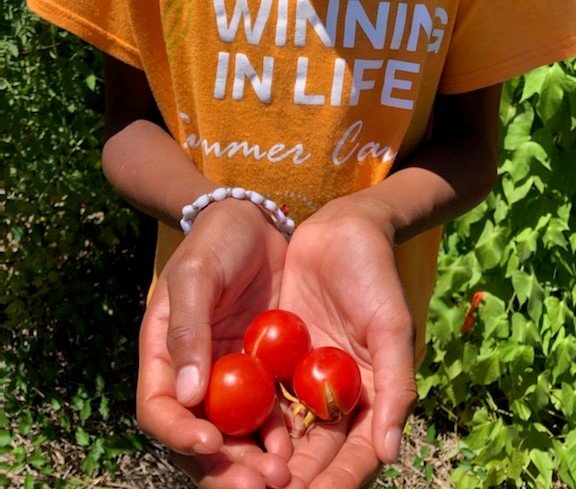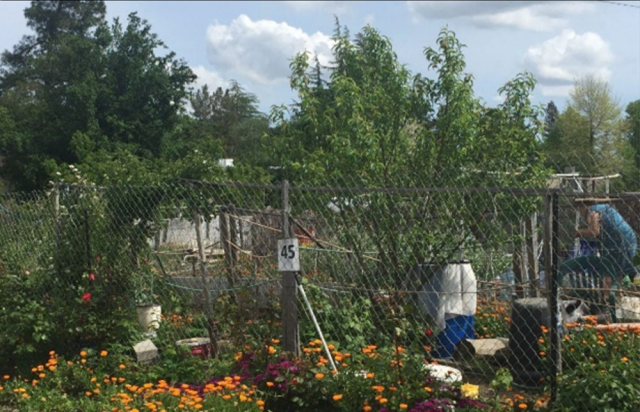For Local Communities, the Sky is the Limit
Growing up near an airport in west Texas, my twin brother and I were always looking up. Watching all types of aircraft, we became fascinated with aviation. Our senior year of high school we sought ground service jobs, pumping fuel into airplanes, which at the time seemed like the coolest job ever!
Ironically, whenever I had the chance to take to the sky, I also became fascinated by the ground, especially the bird’s-eye view of the full-scale map passing below. I studied the passing urban stretches, huge swaths of farmland, highway lines, gray industrial zones, supersized warehouses, an occasional windfarm, and so many unidentifiable developed sites. The vast scale and scope of human activity below always astonished me.

My reflections on what I saw happening on the ground competed with my intense interest in pursuing an aviation career. A legacy of family camping trips and gardening, a recession at the right time, an adventurous stint with Peace Corps working with highland agricultural cooperatives in Guatemala and a well-timed job opportunity in DC sealed my pivot to a federal career in environmental protection at EPA.
In my experience, EPA has always been in a tight place, trying to take into account the interests of people in impacted communities, the ecosystems we all rely upon, and society’s economic interests. My early experiences taught me that durable solutions keep all three in balance, not unlike like the three landing gears on a plane. I carry the need for this balance into my current project management role in the Local Foods, Local Places Program.
Housed in EPA’s Office of Community Revitalization, the Local Foods, Local Places program provides in-kind technical assistance to communities seeking support as they develop local food systems while boosting downtown or neighborhood revitalization efforts. Our efforts improve local youth and community engagement, make environmental improvements and address nutrition and human health.
As a voluntary program, Local Foods, Local Places complements the regulatory actions that EPA employs to improve environmental outcomes across the country. Voluntary programs can help build partnerships with communities when there may be resistance to the traditional regulatory approach. Local Foods, Local Places' community-driven approach unleashes local creative minds to envision innovative paths to overcome the complex legacies of social and environmental problems and inequities.

Stable access to food – and most importantly to healthy foods – is a basic human need. Local Foods, Local Places encourages a holistic approach to local food system development, boosting local downtown and neighborhood revitalization efforts. Communities thoughtfully plan where and how to place food assets, such as food hubs, retail food co-ops and community gardens. People whose livelihoods focus on food can realize their hidden powers to significantly improve the local economy, promote environmental health and build robust community resilience to a changing climate. For example, food systems that are more localized can reduce greenhouse gas emissions, reduce stormwater runoff and improve local drinking water quality. Composting programs help lower emissions from landfills.
Local Foods, Local Places brings transportation, education, urban planners and local environmental professionals together with local food system folks where they can think about local food assets through their own lens. New partners also find opportunities for working together to accelerate and amplify each other’s goals. The facilitated planning process gives a voice to community members who often have the least influence, but are most likely to be impacted by planning outcomes of decision makers. Community needs are an important part of the decision-making process and the resulting community action plan.

Just like the bird’s eye view from the window seat, Local Foods, Local Places starts out with a community vision from the 30,000-foot level, then brings high-level ideas back down to earth by focusing on detailed actions and next steps. This may sound easy, but it is always challenging. It helps to celebrate each step of the process, recognizing effort and encouraging people to keep moving forward. Fortunately, food pairs well with celebration, which means that local food system folks are well suited to play a role in providing meaningful support to local food and non-food system goals as well.
As I mark my 30th year at EPA, I am taking the idea of celebration to heart! Way back when I started out as a refueler, it was obvious that without the effort of the entire ground and flight crews, the plane was simply not going to fly. Everyone on the team plays a critical role.
I am grateful be part of the team as we launch the 2024 round of Local Foods, Local Places, supporting community champions seeking assistance in planning their local food systems and significantly boosting downtown revitalization efforts. It all starts locally, with each community member doing their part to promote safer, inclusive, thriving, and environmentally sustainable communities for every resident. I’m also re-committing myself to celebrating my own accomplishments, big and small, as well as those of my colleagues and partners — who help EPA fly every day. Whether celebrating on Earth Day, Earth Month or a lifetime of achievement, there are so many ways to celebrate and motivate ourselves to help make the change we wish to see.

About the Author
John Foster
National Program Manager
Office of Policy
Since 2019 John Foster has served as the national program manager for the Local Foods, Local Places (LFLP) program within the EPA’s Office of Community Revitalization. His interactions with the program’s community participants and federal partners have inspired him to champion the LFLP technical assistance approach to supporting community-led planning efforts at the intersection of local food system development, healthy food access, environmental protection, youth engagement, economic development, and downtown and neighborhood revitalization. Over the years he has worked on multiple voluntary programs that advance community improvement and beyond-compliance culture environmental protection. Before joining EPA, he served as a U.S. Peace Corps Volunteer in Guatemala working with agricultural cooperatives and small businesses in the Guatemalan highlands. When not at work he enjoys every moment with his beautiful wife and daughters!
Editor’s Note: The views expressed here are intended to explain EPA policy. They do not change anyone’s rights or obligations. You may share this article. However, please do not change the title or the content, or remove EPA’s identity as the author. If you do make substantive changes, please do not attribute the edited title or content to EPA or the author.
EPA’s official web site is www.epa.gov. Some links on this page may redirect users from the EPA website to specific content on a non-EPA, third-party site. In doing so, EPA is directing you only to the specific content referenced at the time of publication, not to any other content that may appear on the same webpage or elsewhere on the third-party site, or be added at a later date.
EPA is providing this link for informational purposes only. EPA cannot attest to the accuracy of non-EPA information provided by any third-party sites or any other linked site. EPA does not endorse any non-government websites, companies, internet applications or any policies or information expressed therein.
